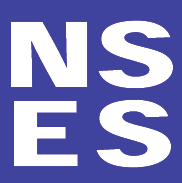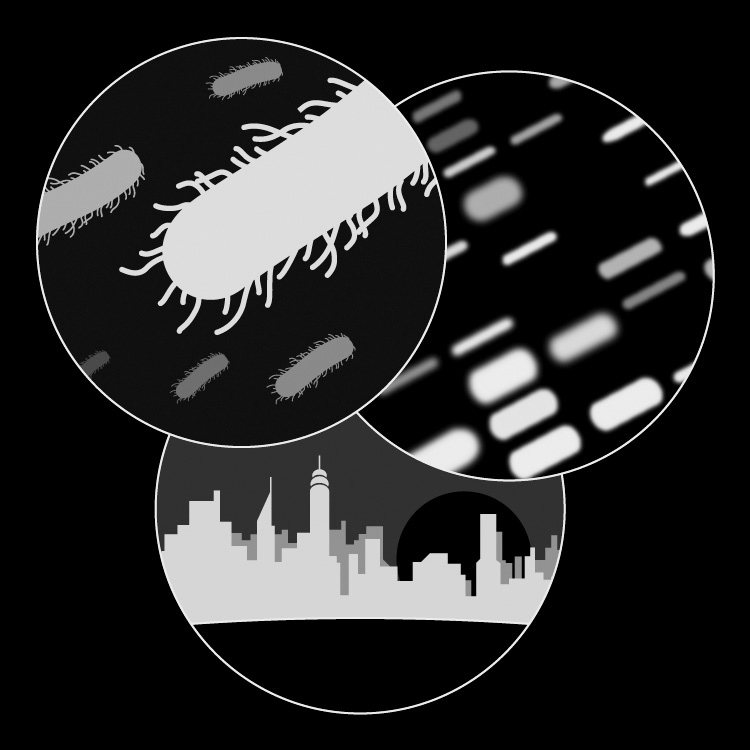during the lesson can help you assess students’ relative familiarity with the concepts and identify misconceptions. Intended to be brief, this
initial assessment of preconceptions can help you adjust your teaching of 2
Lessons 2 through 5.
1.
Begin the lesson by explaining that you have received a letter
from a television producer asking for help with a new reality TV
show his production company is developing.
2.
Display Master 1.1, Letter from a Producer. Ask for a volunteer to read the letter aloud to the class.
The letter explains that a proposed reality TV show will take place
in a middle school and involve a class that includes one student
3
who has a rare disease. The show will give viewers an idea of how
this student interacts with teachers and other students. The specific
nature of the disease has not yet been decided.
3.
Further explain that the principal has asked your class to help
with the producer’s request. Ask,
• “How would you feel about having such a student join the
class?”
• “What questions would you want to ask before the student
arrives?”
• “What questions would you want to ask the student who has
4
the rare disease?”
Write these three questions on the board.
4.
Instruct students to record these questions and their answers to
them in their notebooks. They should also record any feelings
they have about the student joining their class.
This step is intended to have students briefly record their initial
feelings about people with rare diseases and to elicit any questions
5
Lesson 1
47


or concerns they might have. Give students about five minutes to
complete this task.
5.
After students have recorded their thoughts and questions, ask
for one or two volunteers to share something they wrote in their
notebooks.
At this time, accept all answers. Do not attempt to answer the
Students’ responses
students’ questions or make judgments about their feelings.
to these questions
6.
Comment that the feelings expressed and the questions asked
will help you assess
are understandable and that students will be learning about
their initial attitudes
rare diseases during the remainder of this lesson and in the four
toward rare diseases
lessons that follow.
and those affected by
7.
Explain that you will begin by exploring what the word “disease”
them.
means to them. Give each student a copy of Master 1.2,
Thinking about Disease. Instruct students to answer the questions and carry out the task described on the handout.
Explain that this handout is not meant to be a test. Instead,
it is designed to help students organize their thinking about
disease. Students’ responses to the handout will identify their
preconceptions about disease. Give students about 10 minutes to
complete the handout.
Note: Students may ask questions that, although good, address issues that interrupt the flow of the lesson. One strategy for honoring such questions is to establish a “parking lot” on a piece of chart paper or the board. One half of the parking lot is labeled “unanswered” and the other half is labeled “answered.”
Questions that are best answered at a later time are written on sticky notes and placed in the “unanswered” column. As questions are addressed in the activities, move the sticky notes to the answered side of the parking lot.
8.
After students have completed Master 1.2, ask for volunteers to
share their responses to Questions 1–3.
Answer key for questions on Master 1.2, Thinking about Disease
Content Standard C:
Disease is a
1. What is a disease?
breakdown in
Many students will respond that a disease is a sickness that results structures or functions
from an infectious agent such as a germ, bacterium, or virus. If
of an organism. Some
other causes such genetics or exposure to environmental toxins are
diseases are the result
not mentioned, do not be concerned. These other disease causes will be brought out in Question 3 and in the next lesson.
of intrinsic failures of
the system. Others are
2. How do doctors tell whether someone has a disease?
the result of damage
Students will likely think of blood or other types of laboratory tests.
by infection by other
This question also provides an opportunity to discuss different types organisms.
of disease symptoms such as fever, pain, and skin rashes.
48
Rare Diseases and Scientific Inquiry

Ask students to describe how the doctor can observe or measure
these symptoms.
3. What do you think causes disease?
Again, students likely will mention infectious agents. If they don’t mention other causes, challenge them to think of a disease caused
by something other than an infectious agent. If necessary, ask
1
guiding questions to bring out the ideas that heredity and exposure to toxic substances in the environment are also causes.
9.
Ask students to report some of the diseases they listed for
Question 4 on the handout. As they respond, record and display
for the class a list of about 20 diseases. After the list is assembled, ask students to think about the causes of these diseases and
whether there are ways to group these diseases based on their
causes. Instruct students to organize the 20 diseases in their
notebooks in a way that illustrates the different causes.
2
Students may elect to make a table with the columns corresponding
to different causes and the rows corresponding to disease examples.
Some students may be concerned that a given disease could have
or be influenced by more than one cause. Ask these students to
consider using a graphical representation such a Venn diagram to
illustrate these interactions.
Students may have listed diseases for which they don’t know the
causes. This is understandable. The important part of this exercise
is not to compile a lengthy list of diseases and their causes but
3
rather to give students a chance to express their preconceptions
about diseases and their causes. If students ask you what causes a
particular disease and you know the cause, tell them so they can
classify it. If you don’t know the cause of the disease, instruct the
student to put a question mark next to the disease and not to worry
about classifying it by its cause.
Note: You may want to assign Step 9 (causes-of-disease organizer) as homework.
The manner in which
4
10. After students have completed the task, ask for volunteers to
describe how they organized the diseases in their notebooks.
individual students
Ask each volunteer to explain the general causes of the diseases
organize the list of
and to list an example for each. Ask whether any of the diseases
diseases will help you
have more than one cause or whether any of the listed causes
assess the student’s
interact with each other.
initial ideas about
diseases and their
Ask questions to clarify students’ thinking, but do not correct
causes and to identify
misconceptions at this time. The three main causes of disease
(infectious agents, heredity or genetics, and exposure to
misconceptions the
environmental toxins) will be addressed in the subsequent lessons.
student may have.
5
Lesson 1
49
Environmental exposure may be somewhat confusing. One can
argue that a disease brought about by exposure to a pathogen is
environmental since the pathogen is found in the environment. For
our purpose, a disease caused by environmental exposure refers to a
nonliving agent such as radiation, heavy metals, or a toxin produced
by another organism.
11. Ask for volunteers to share their responses to Question 5.
5. What does it mean to call a disease “rare”?
Students’ responses will vary. If students struggle with this question, rephrase it by asking whether some diseases affect more people
than others. You may mention that in this country, a disease is
considered to be rare if 200,000 people or fewer have it. To help
students make some sense of this number, you can mention that the
U.S. population was about 311 million people in 2011.
12. Ask, “Do you think that a disease that is rare always remains
rare? Can a rare disease become a common disease?”
Students’ responses will vary. If students don’t bring it up, ask
guiding questions to bring out the idea of a new infectious disease
such as swine flu that begins as a rare disease and then becomes
common as it spreads.
13. Ask, “Can a common disease become a rare disease?”
If a student doesn’t mention this, direct the discussion to medicine’s
ability to control or even eradicate some diseases. You may mention
polio as an example of a disease that was once common but is now
rare. Smallpox has actually been extinguished.
14. Ask for volunteers to share their responses to Question 6
(whether the diseases they listed are curable, controllable, or
not controllable).
For many diseases on their lists, students will not be able to say
whether they are curable, controllable, or not controllable. Bring out
in the discussion examples of diseases that are curable, such as many
bacterial infections, and others that are controllable, such as diabetes.
15. Explain that some diseases are relatively easy to treat and
others are more difficult. Ask, “What are some reasons that one
disease might be more difficult to treat than another?”
Students may focus on specific diseases. Try to get them to speak in
general terms to address issues such as the amount of information
50
Rare Diseases and Scientific Inquiry
known about the disease, the ease of diagnosis, and the amount
of resources that society devotes to the study and treatment of the
disease.
Remind students to return Master 1.2 to their notebooks. They will
revisit the ideas they recorded on the handout in a later lesson.
1
16. Conclude the lesson by remarking that the lessons that follow
will give students opportunities to reflect on the ideas brought
out during this lesson and to modify their thinking if necessary.
2
3
4
5
Lesson 1
51
Lesson 1 Organizer
Activity 1: What Is a Rare Disease?
Estimated time: 50 minutes
Page and Step
Explain that a TV producer wants to film a reality show about a student Page 47
with a rare disease joining the class. Display Master 1.1, and have Steps 1
someone read it aloud .
and 2
Write these questions on the board as you ask them:
Page 47
• “How would you feel about having such a student join the class?”
Step 3
• “What questions would you ask before the student arrives?”
• “What questions would you ask the student who has the rare
disease?”
Instruct students to write the answers in their notebooks.
Page 47
Step 4
Ask one or two volunteers to share their answers with the class.
Page 48
Step 5
Explain that students will be learning about rare diseases in the lessons Page 48
that follow. To begin, they will explore the nature of disease.
Steps 6
• Hand out a copy of Master 1.2 to each student.
and 7
• Instruct students to follow the directions on the handout.
Ask volunteers to share their responses to Questions 1–3.
Page 48
Step 8
Ask volunteers to report diseases they listed for Question 4.
Page 49
• Record and display a list of about 20 diseases students mentioned.
Step 9
• Ask students whether they can group these diseases by cause.
Ask volunteers to explain how they grouped the diseases.
Page 49
Step 10
Ask volunteers to share their responses to Question 5.
Page 50
Step 11
Ask students,
Page 50
• “Do you think a disease that is rare always remains rare?”
Steps 12 and 13
• “Can a rare disease become a common disease?”
• “Can a common disease become a rare disease?”
Ask volunteers to share their responses to Question 6.
Page 50
Step 14
Explain that diseases vary in how easy they are to treat. Ask, “What are some Page 50
reasons that one disease might be more difficult to treat than another?”
Step 15
Explain that students will be reflecting on these ideas and changing
Page 51
their thinking if necessary.
Step 16
= Involves making a transparency.
= Involves copying a master.
52
Rare Diseases and Scientific Inquiry


Lesson 2
What Causes Rare Diseases?
1
2
Explore
At a Glance
Overview
In this lesson, students assume the roles of medical officers working to protect the health of soldiers at an army post. In the course of their duties, 3
they must consider the major causes of disease and pay special attention to infectious diseases that have the potential to spread throughout the post. One soldier becomes infected with a common bacterial species that leads to the development of a serious rare disease.
Major Concepts
• Diseases have three main causes:
– genetics,
– environmental exposure, and
– infectious agents.
4
• A bacterial species that causes a common disease can sometimes cause
a rare disease.
• Disease causes sometimes interact.
Objectives
After completing this lesson, students will have
• considered the different causes of disease,
• recognized that a single species of pathogen can cause two different
diseases depending on the route of infection, and
• discussed an example of how two different disease causes (infection
and genetics) can interact to produce a rare disease.
5
53
Teacher Background
Consult the following sections in Information about Rare Diseases and
Scientific Inquiry:
2.0 The Impact of Genomics on Rare Diseases (pages 24–26)
3.0 Rare Infectious Diseases (page 26)
4.0 Rare Diseases Caused by Environmental Toxins (Pages 27–28)
5.1 Necrotizing Fasciitis (pages 28–29)
6.0 Rare Diseases as a Topic for the Middle School Classroom (pages 33–34) In Advance
Web-Based Activities
Activity
Web Component?
1
Yes
2
Yes
3
No
Photocopies, Transparencies, Equipment, and Materials
Photocopies and Transparencies
Activity 1: Causes of Disease
For Classes Using Web-Based Activity:
1 transparency and 1 copy for each pair of students of Master 2.1
For Classes Using Print-Based Activity:
1 transparency and 1 copy for each pair of students of Master 2.1
1 copy of Masters 2.2 and 2.3 for each pair of students
Activity 2: Is a Rare Disease Present?
For Classes Using Web-Based Activity:
1 copy of Master 2.7 for each pair of students
For Classes Using Print-Based Activity:
1 copy of Masters 2.4, 2.5, 2.6, and 2.7 for each pair of students
(Optional: For Master 2.6, block out the photos before copying; see
Note on page 62.)
Activity 3: How Rare Is Rare?
None
Continued
54
Rare Diseases and Scientific Inquiry

Equipment and Materials
For Activities 1 and 2, Web-based versions, students will need
computers with Internet access.
For Activity 3, you will need baby lima beans for each group of four students:
1
• 1 small container with 9 beans and 1 bean colored red and
• 1 large container with 99 beans and 1 bean colored red.
Preparation
Activity 1
Make photocopies and a transparency.
For classes using the Web version, verify that the computer lab
is reserved for your classes or that the classroom computers
are set up for the activities. Refer to Using the Web Site for
2
details about the Web site. Check that the Internet connection
is working properly.
Log on to the Web Portion of Student Activities section of the site at
http://science.education.nih.gov/supplements/rarediseases/student
Select “Lesson 2: What Causes Rare Diseases?” so students can begin the activity right away.
3
Activity 2
Review the photos of the necrotizing fasciitis (NF) patient on Master 2.6, Medical Reference Manual: Necrotizing Fasciitis. If the photo of the late-stage infection is too graphic for your students, block it out before copying. Make photocopies.
Activity 3
Each group of four students will need
• 1 small container with 9 baby lima beans and 1 bean colored red (use
a marking pen) and
4
• 1 large container with 99 baby lima beans and 1 bean colored red (use a marking pen).
It will save time if you weigh the beans rather than count them. There are approximately 100 baby lima beans per 1.33 ounces (37.7 grams).
5
Lesson 2
55
Procedure
Note: This is an Explore lesson. It is designed to give students a common experience they can use to begin constructing understandings about rare diseases and their causes. In this lesson, students assume the roles of medical officers at an army post. This scenario gives students a real-life context in which to consider genetics, infectious agents, and environmental exposure as the major causes of disease. The lesson focuses on the rare disease necrotizing fasciitis (NF), more commonly known as flesh-eating disease. The serious nature of this disease may be disturbing to some students. The lesson stresses that although NF is caused by a commonly encountered bacterium, the
immune system normally stops the infection before it becomes dangerous.
In rare cases (about 1 in 100,000 people), the bacteria elude the immune system and the infection can lead to organ failure and death. The hands-on probability activity is included to help make the rarity of the disease more understandable and thus reduce any student anxiety.
Activity 1: Causes of Disease
Estimated time: 30 minutes
1.
Explain that in this lesson, you will be concerned with this
question: What causes rare diseases?
Display this question for the class. Students should recall some
causes of disease from the first lesson. In Step 8, you may need
to remind students that there are three general causes of disease:
infectious agents, heredity (genetics), and exposure to toxins in the









